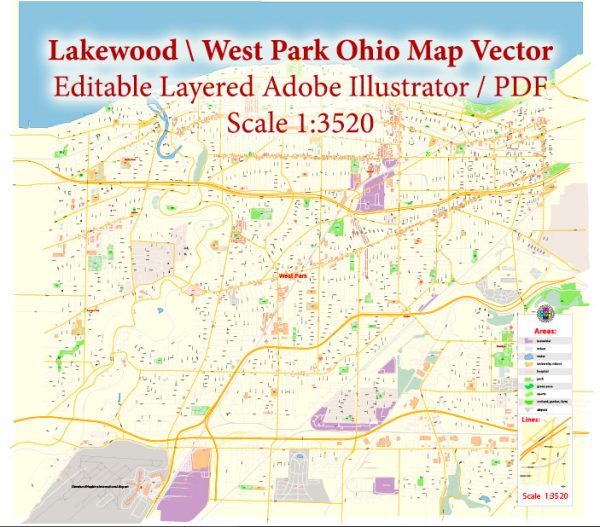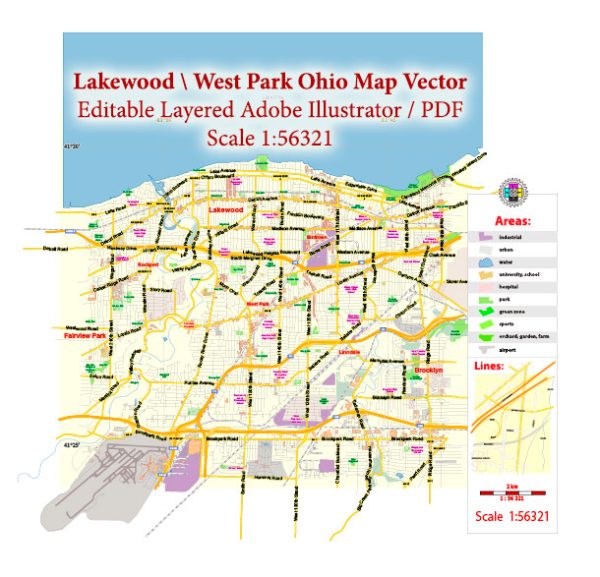Lakewood, Ohio, has a rich history of urban development that reflects the broader trends and challenges faced by many American cities. The city is located just west of Cleveland and has evolved significantly since its founding. Here’s a brief overview of the history of urban development in Lakewood:
- Early Settlement and Development: Lakewood was originally settled in the early 19th century as a farming community. With the construction of the Detroit-Superior Bridge in 1878, connecting Lakewood to Cleveland, the area saw increased accessibility and growth. The introduction of streetcar lines in the late 19th century further facilitated the development of the community.
- Suburban Expansion: Like many cities in the United States, Lakewood experienced significant suburban expansion in the early to mid-20th century. The availability of automobiles and improved infrastructure contributed to the growth of suburban communities. Lakewood, with its proximity to Cleveland, became an attractive suburb for those seeking to escape the urban environment while maintaining easy access to the city.
- Housing and Architecture: Lakewood boasts a diverse architectural landscape, reflecting the different periods of its development. Early 20th-century housing stock includes many well-preserved examples of Colonial Revival, Tudor, and Craftsman-style homes. The mid-20th century brought an influx of ranch-style houses, reflecting the design trends of the time.
- Commercial Development: The commercial development of Lakewood has been characterized by a mix of small businesses and larger commercial areas. Detroit Avenue, one of the city’s main thoroughfares, has historically been a hub for local commerce, featuring a mix of retail stores, restaurants, and entertainment venues.
- Challenges and Renewal: Like many urban areas, Lakewood faced challenges in the latter half of the 20th century, including economic decline and population shifts. However, in recent decades, there has been a concerted effort to revitalize and renew the city. This has involved initiatives to enhance public spaces, attract businesses, and promote community engagement.
- Sustainability and Green Initiatives: As part of its urban development strategy, Lakewood has increasingly focused on sustainability and green initiatives. This includes efforts to improve public transportation, increase green spaces, and promote environmentally friendly practices.
- Cultural and Community Development: Lakewood is known for its vibrant community and cultural scene. The city hosts various events, festivals, and has a thriving arts community. The historic Beck Center for the Arts is a notable cultural institution that has contributed to the city’s cultural identity.
Overall, Lakewood’s history of urban development reflects the broader trends of suburbanization, economic shifts, and efforts to create a sustainable and vibrant community. Today, Lakewood continues to evolve, balancing its historical character with modern urban planning principles.



 Author: Kirill Shrayber, Ph.D.
Author: Kirill Shrayber, Ph.D.